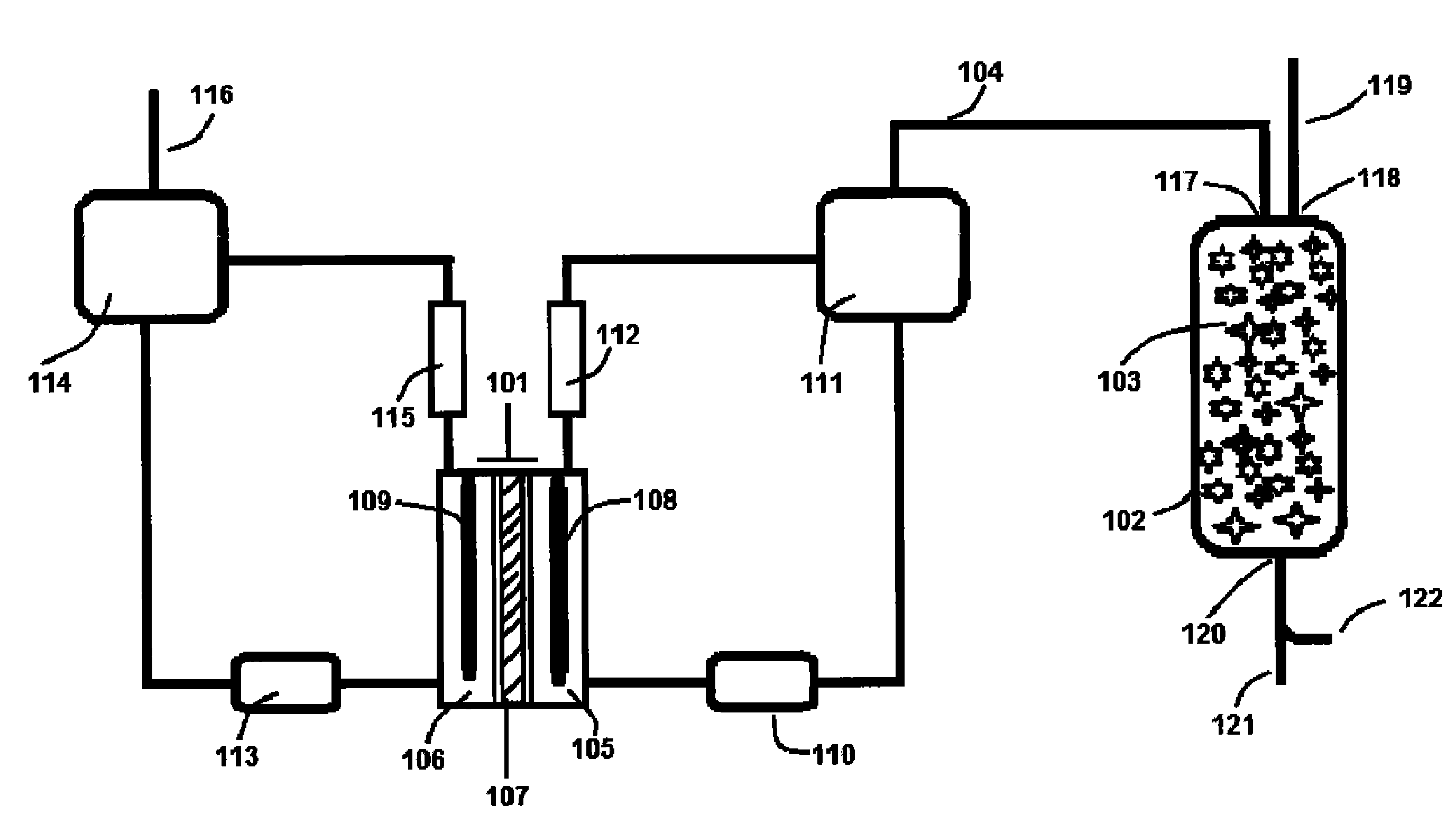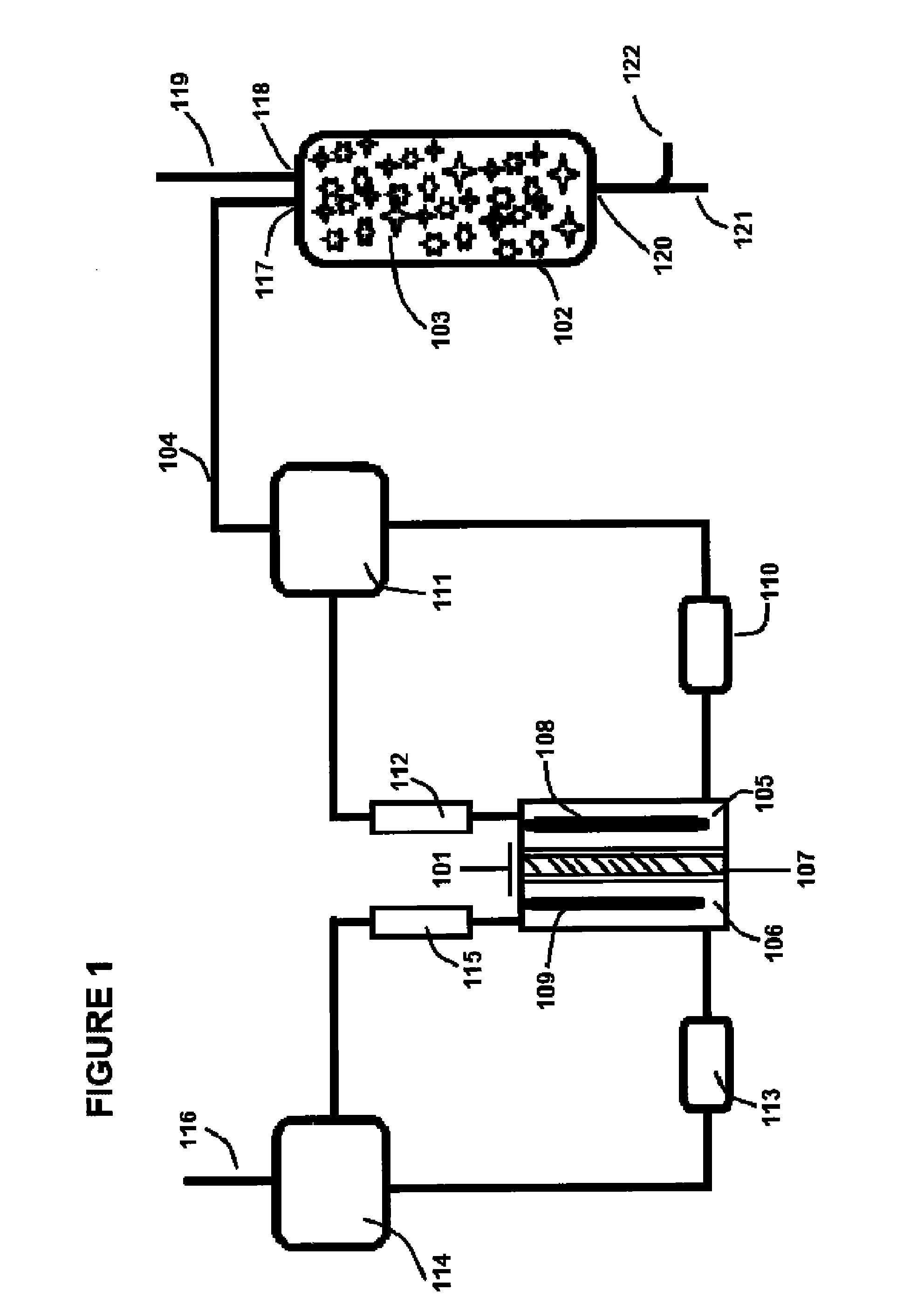Gold recovery
a gold recovery and gold technology, applied in the field of gold recovery, can solve the problems of high energy consumption, large volume, toxicity, etc., and achieve the effects of reducing the cost of effluent treatment, reducing the cost of gold leaching, and improving the efficiency of the process
- Summary
- Abstract
- Description
- Claims
- Application Information
AI Technical Summary
Benefits of technology
Problems solved by technology
Method used
Image
Examples
Embodiment Construction
[0064]It should be readily apparent to one of ordinary skill in the art that the examples disclosed herein below represent generalised examples only, and that other arrangements and methods capable of reproducing the invention are possible and are embraced by the present invention.
[0065]FIG. 1 illustrates an embodiment of the present invention. An electrolytic cell 101 is disposed external to a (reactor) vessel 102, the latter being charged with substrates comprising gold 103. By way of example, the substrates comprising gold 103 may be waste electrical goods, for example printed circuit boards, in which gold is plated or coated onto another material such as copper or nickel. A conduit 104 allows for fluid communication between the vessel 102 and the electrolytic cell 101. Naturally, the conduit 104 will be manufactured from a material that is incapable of being corroded by chlorine gas.
[0066]The electrolytic cell 101 is a divided cell having an anode chamber 105 and cathode chamber...
PUM
| Property | Measurement | Unit |
|---|---|---|
| volume | aaaaa | aaaaa |
| volume | aaaaa | aaaaa |
| volume | aaaaa | aaaaa |
Abstract
Description
Claims
Application Information
 Login to View More
Login to View More - R&D
- Intellectual Property
- Life Sciences
- Materials
- Tech Scout
- Unparalleled Data Quality
- Higher Quality Content
- 60% Fewer Hallucinations
Browse by: Latest US Patents, China's latest patents, Technical Efficacy Thesaurus, Application Domain, Technology Topic, Popular Technical Reports.
© 2025 PatSnap. All rights reserved.Legal|Privacy policy|Modern Slavery Act Transparency Statement|Sitemap|About US| Contact US: help@patsnap.com


